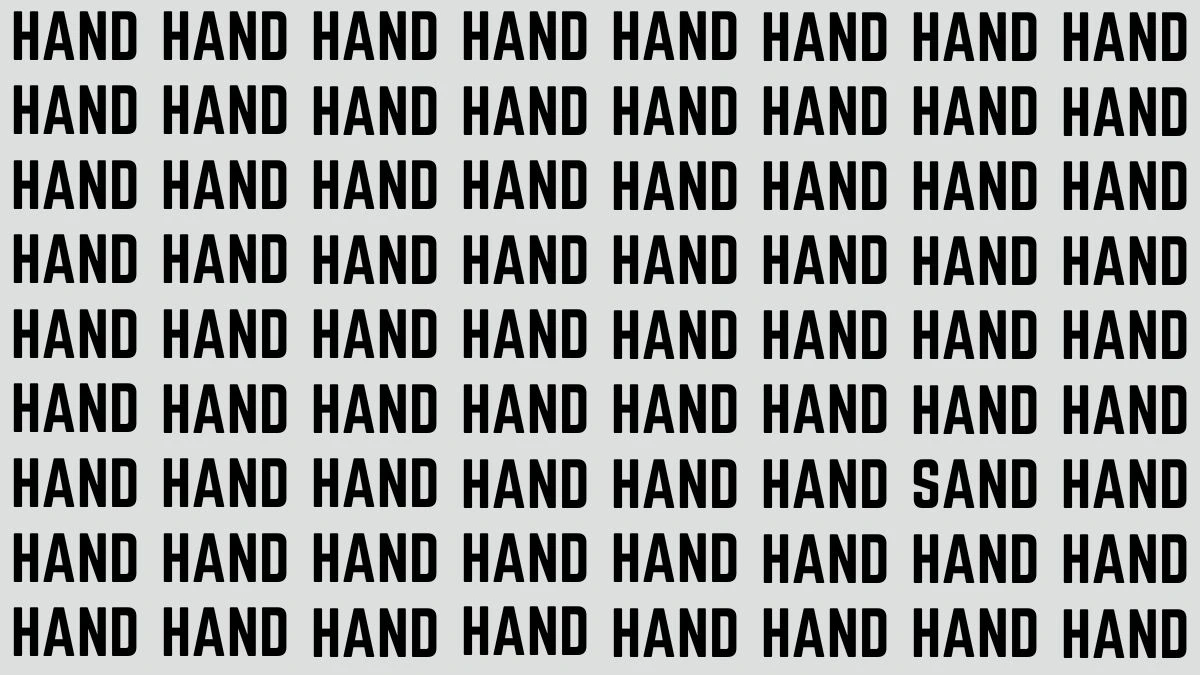optical illusion
Optical illusion is also called visual illusion. There are many types of optical illusions. Optical illusion to check people’s IQ level and visual level. Optical illusions are caused by the visual system, and form a visual perception Optical illusions have three main classes physiological, anatomical and cognitive illusions.
- Spot the 3 Differences: Only Extra Sharp Eyes Can Spot the 3 Differences in this Giraffe Image in 10 Secs
- Spot the Difference Game: Only Genius with Extra Sharp Eyes Can Spot the 3 differences in this Cat Image in 9 Secs
- Spot the Difference Game: Only 50/50 Vision Can Spot the 3 Differences in this Camel and Tortoise Image in 10 Secs
- Observation Find it Out: Only excellent vision Can Spot the Word Orange in 8 Secs
- Observation Brain Challenge: Only 8K Vision Can Spot the Different Cow in 8 Secs
Article continues below advertisement
You are watching: Optical Illusion: Can you Find the Word Sand among Hand in 8 Secs
Each category is of four types: ambiguity, distortions, contradictions and imagination. Not all humans find it easy to find solutions to optical illusions; It depends on the person’s ability to see.
Optical Illusion: Can you find the word sand between hands in 8 seconds
This optical illusion challenges your visual perception by hiding the word “sand” among a sea of the word “hand.”
Your task is to find the hidden word within only 8 seconds. The trick lies in the repetitive nature of the text, which can easily distract your eyes and mind.
See more : Observation Skill Test: If you have Eagle Eyes Find the Word Burger in 9 Secs
To be successful, focus on scanning the letters closely, looking for differences in arrangement or spacing.
This exercise not only tests your observation skills but also helps enhance your ability to recognize subtle differences in similar patterns, making it a fun way to improve your cognitive abilities.

Optical Illusion: Can You Find the Word Sand Between Hands in 8 Seconds – Solution
In this optical illusion, the word “sand” has been cleverly hidden between repeated instances of the word “hand”.
To recognize it, just focus on the arrangement of the letters rather than the overall pattern.
See more : Optical Illusion Brain Test: Only Eagle Eyes Can Spot the Number 666 among 696 in 8 Secs
The word “sand” will stand out because of its unique letter combination.
If you scanned the words carefully, you might have noticed that ‘s’ and ‘a’ form a different starting point, while ‘n’ and ‘d’ complete the hidden word.
This challenge demonstrates how our brains can sometimes overlook small details when faced with repetitive stimuli, highlighting the importance of careful observation and attention to detail.

trending
Source: https://hmiendongsaigon.edu.vn
Category: Optical Illusion
